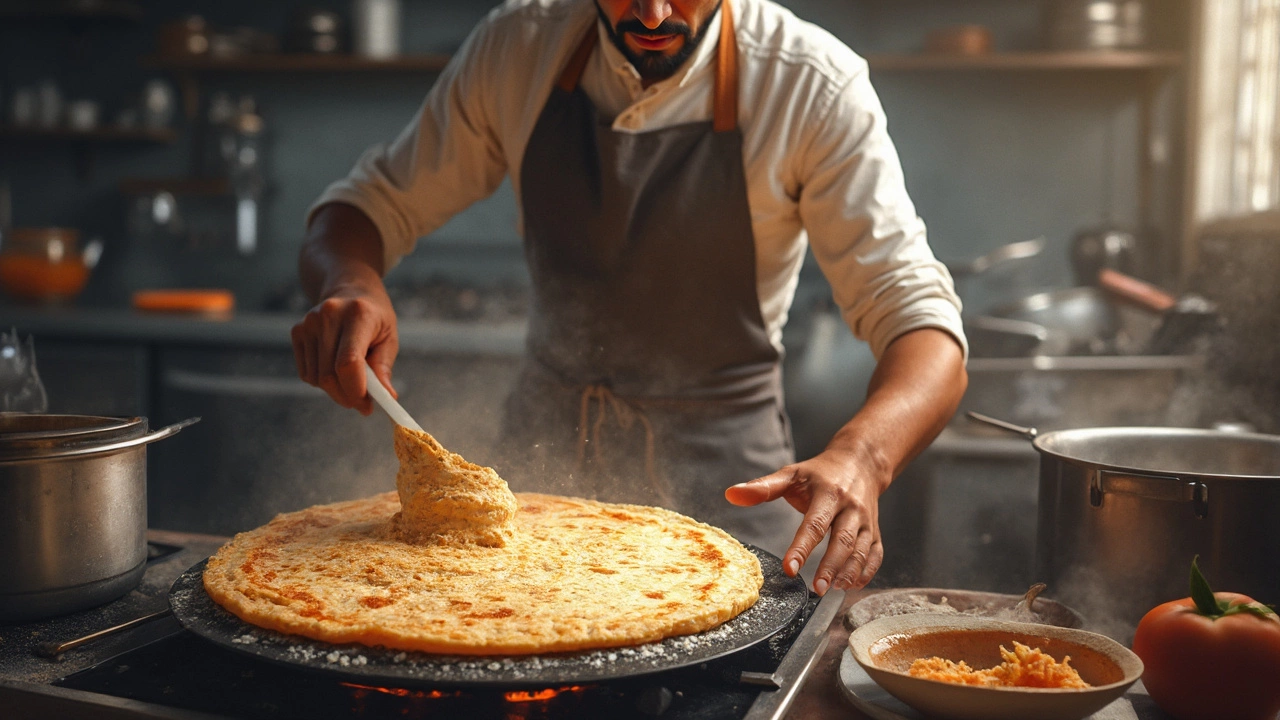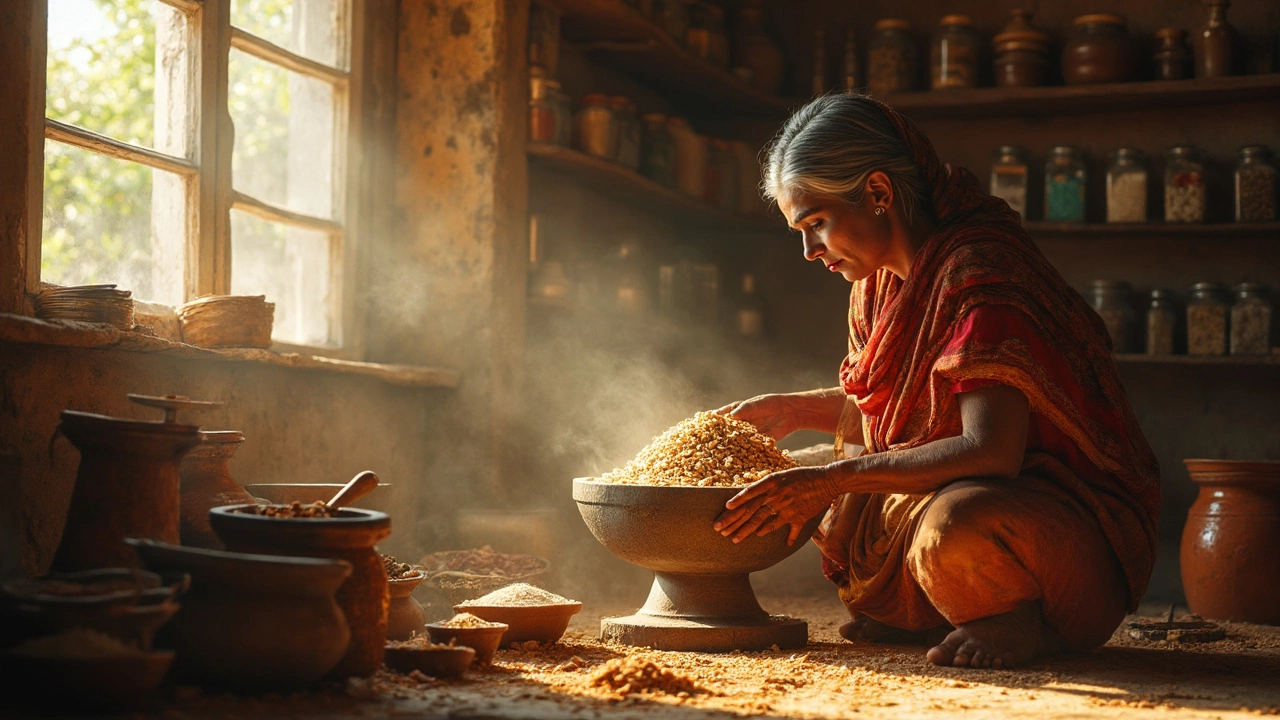Ever wondered why your dosa batter sometimes turns out rubbery? It's more common than you think, and usually, it boils down to a few easily fixable factors.
First off, let's talk about the main players in the batter game – rice and lentils. The type of rice you use matters, and so does the ratio. If your rice to lentil ratio is off, your dosas might end up chewy instead of crispy. But don’t worry, we're here to figure this out together.
Fermentation is the next big thing. It’s a magical process, and when it's done right, it's what gives dosas their signature taste and texture. A common mistake is under-fermenting, which can lead to that dreaded rubberiness. The key is patience and a warm spot in the kitchen.
Oh, and don’t forget about your kitchen tools. They might seem insignificant, but using the right ones can change the game. A heavy cast-iron pan, for instance, can make a big difference in getting the perfect dosa every time. Ready to dive deep into this delicious topic? Let's go!
Causes of Rubbery Dosa Batter
Making dosa is quite an art, and when your eagerly awaited crispy delight turns rubbery, it's a real letdown. But don't worry – once you understand the common causes, you can take steps to avoid them.
Incorrect Rice to Lentil Ratio
The right balance of rice and lentils is crucial. Traditionally, a ratio of 3:1 is recommended, but it's not set in stone and might vary based on your preferences. Too much lentil (or dal) can make the batter too heavy, leading to chewy dosas. So, measure carefully.
Faulty Fermentation Process
Fermentation is like the magic wand in dosa making. If the batter doesn't ferment well, it won't trap enough air, resulting in flat, less crispy dosas. Ensure you're leaving the batter in a warm place – the kitchen counter's perfect if it's warm enough – for about 8-12 hours, depending on the weather.
Inappropriate Grinding Process
For a smooth batter, use a wet grinder if possible. Food processors can heat up the batter, affecting fermentation and consistency. The batter should be smooth yet slightly grainy, not too thin or thick. This helps the dosa cook evenly.
Cooking Temperature
Getting the right pan temperature can be tricky. If it's too hot or cold, it may cause the dosa to lose its lovely crunch. An easy tip: sprinkle some water on the pan; it should sizzle right away but not evaporate instantly.
Keep these pointers in mind, and you'll be well on your way to avoiding those rubbery moments!
Improving Batter Consistency
Getting the perfect dosa batter isn't just about mixing ingredients. It's about getting the consistency right, which can make or break your dosa experience. Here are some practical tips to help you nail it every time.
Choose the Right Rice
Not all rice is created equal when it comes to making dosas. Opt for idli rice or parboiled rice, as they work best for dosa batter. The starch content is crucial for achieving that perfect blend.
Here's a quick tip: rinse your rice 2-3 times to remove excess starch. This can actually help in preventing that rubbery texture.
Balance Your Ingredients
Finding the perfect ratio of rice to lentils is key. Many people use a 3:1 or 4:1 ratio of rice to urad dal (black gram lentils). This balance helps achieve a smooth, pourable consistency.
Grinding Tips
When it comes to grinding, a wet grinder works wonders, allowing you to achieve a silky-smooth batter. However, if you're using a blender, make sure to add water slowly as needed.
- Grind the rice and lentils separately for better results.
- Add cold water to avoid overheating, which can affect fermentation.
Water Matters
Don’t overlook the importance of water. Too much can make the batter runny, while too little will leave it thick and unspreadable. Aim for a thick yet pourable batter consistency similar to pancake mix.
Consistency Check
To know if your batter’s right, dip a spoon in it. The batter should lightly cling to the spoon but drip off smoothly.
Remember, small tweaks in these steps can lead to big improvements in your dosa making skills. Ready to practice?

Fermentation Tips
Getting fermentation right is key to avoiding the rubbery dosa battle. Nail this part, and you're halfway to making perfect dosas every time.
The Perfect Temperature
So, why is temperature important? Fermentation thrives in warm environments. If you're in a cooler climate, like our beloved Wellington, you might need to get a bit creative. Placing the batter in the oven with just the light on or wrapping it in a warm blanket can help keep it cozy.
How Long to Ferment
Time is another crucial factor. Typically, 8-12 hours is ideal, but it can vary. Check for the tell-tale bubbles and slight sour smell—those are good signs you're on the right track. If you don't see any of these, your batter may need a little more time.
Use the Right Ratio
- Stick to the tried-and-true method: 3 parts rice to 1 part lentils.
- Some folks experiment, but this basic ratio is usually a winner.
Remember, the fermentation process is what gives dosas their brilliant taste and texture, so don't skimp on this step.
Avoid Common Pitfalls
There's a couple of things you should definitely avoid. First, don't disturb the batter while it's fermenting, no stirring or poking. And second, avoid over-fermentation, which can cause the batter to become overly sour, impacting the dosa recipe.
With these tips on your side, you'll be well on your way to making delicious, non-rubbery dosas every time!
Cooking Perfect Dosas
Cooking dosas to perfection is an art, but don’t stress — it's something you can master with a few handy tips and a bit of practice. It's all about the right cooking tools, timing, and of course, the right dosa batter consistency.
Choose the Right Pan
First things first, get yourself a good quality, heavy bottomed pan. A non-stick pan can work, but traditionally, a cast-iron skillet gives you that crispy texture you're aiming for. It's all in the heat distribution, which a cast-iron skillet does beautifully.
Heat It Up
Getting the pan to the right temperature is crucial. You want it hot, but not smoking. A little trick? Sprinkle water on the pan, and if it sizzles right away, you're good to go. Make sure to wipe it off before pouring the batter.
Correct Batter Consistency
Your dosa batter should be like pancake batter — not too thick, not too runny. If it feels off, adjust by adding a bit of water or rice flour to get it just right. You’re looking for that goldilocks texture.
Spread it Thin
Pour the batter in the center of the pan, and use a flat ladle to spread it outwards in a circular motion. The thinner, the crispier. Plus, spreading it evenly ensures that it cooks properly.
Cooking and Flipping
Watch the edges: when they start to lift and turn golden brown, it's time to flip. If you're unsure when to flip, check the underside — golden and crispy is the goal!
| Dosa Type | Cooking Time |
|---|---|
| Thick Dosa | 3-4 minutes |
| Thin Dosa | 4-5 minutes |
Once cooked to your liking, slide it off the pan and onto a warm plate. Repeat the process and stack those perfect dosas high!
Remember, getting perfect dosas consistently is a juggling act between your dosa batter, heat, and timing. But with these tips, a bit of practice, and a whole lot of taste testing, you're well on your way to dosa greatness!
